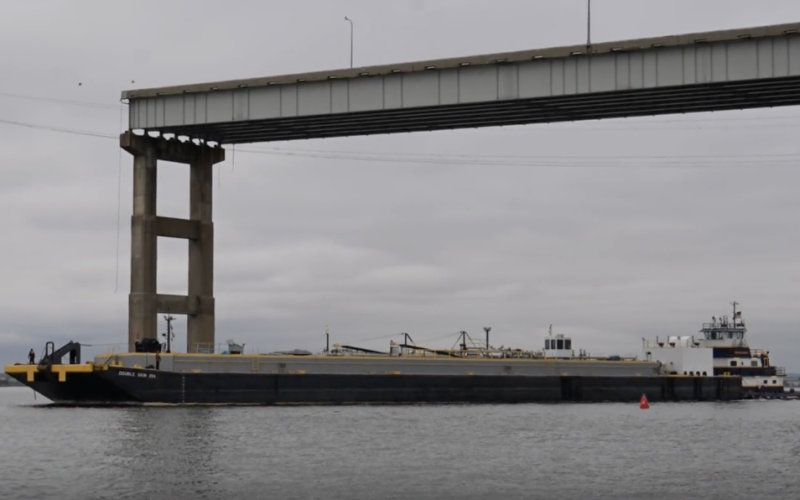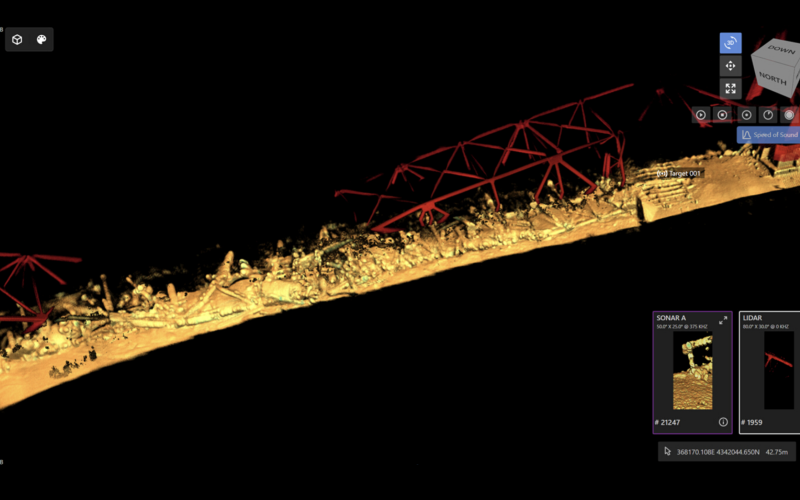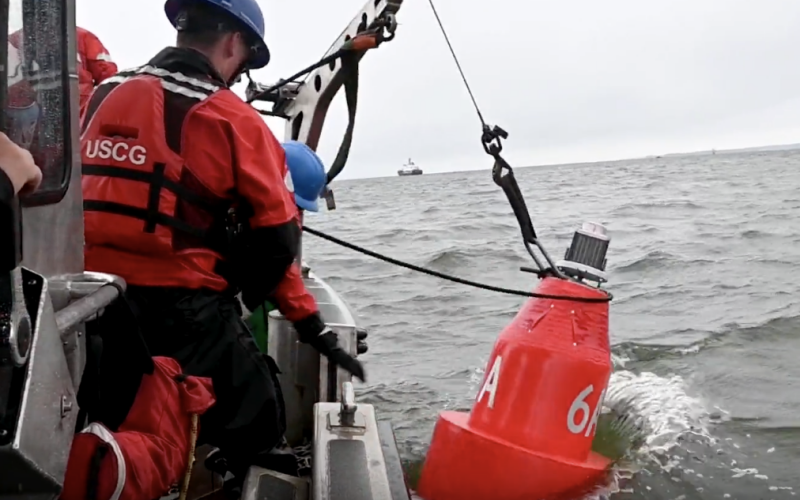A second small channel past the downed Francis Scott Key Bridge opened Tuesday, a day after the first barge transit since the ship allision and bridge collapse of March 26.
At 3 p.m. Monday Dann Marine’s 66.5’x23’ tug Crystal Coast pushed a fuel barge through the first temporary alternate channel set out by the Key Bridge Response Unified Command, on the northeast side of the still-blocked main channel. The barge was transiting to Dover Air Force Base in Delaware, an important airlift hub for the U.S. military.
The second temporary alternate channel was marked with lighted buoys on the southwest side of the main channel near Hawkins Point, with a controlling depth of 14 feet, a 280-foot horizontal clearance, and a vertical clearance of 124 feet.
“The opening of these two alternate channels and transit of critical response resources, as well as the first commercial traffic movements through the area, is a significant milestone in our response efforts,” said Coast Guard Cmdr. Baxter Smoak, operations section chief of the Key Bridge unified command. “Our number one priority remains the opening of the deep draft channel. We are simultaneously focused on opening additional routes of increased capacity as we move forward.”
The work has an initial pledge of $60 million in emergency federal funding through the Department of Transportation. President Biden is scheduled to visit the scene Friday, as his administration pushes for a bipartisan commitment from Congress to rebuild the harbor crossing.

Careful demolition and salvage work continued to remove bridge wreckage around the 985’ container vessel Dali, still embedded at the bridge pier it struck after a power failure outbound from the port.
Two crane barges of 650-ton and 330-ton capacity were working Tuesday and “wreckage will continue to be lifted and transferred to a barge as daylight allows,” according to a unified command statement.
A 230-ton land-based crane will offload and process the wreckage at Tradepoint Atlantic, which will then be taken to a disposal site. Tradepoint Atlantic officials said five acres are set aside at the 3,300-acre terminal tract
Detailed sonar imagery released Tuesday by the U.S. Army Corps of Engineers Baltimore District shows the challenges of removing the wreckage – and recovering he remains of four construction workers, missing since the bridge collapse and believed to be under the steel.
Rendered as three-dimensional images, the sonar data shows “the sheer magnitude of the very difficult and challenging salvage operation ahead,” according to a summary by Corps of Engineers officials. The imagery was provided by the Navy’s Naval Sea Systems Command (NAVSEA) Supervisor of Salvage and Diving (SUPSALV) and shows the wreckage resting at the bottom of the river where the Francis Scott Key Bridge once stood.
Divers on site are using a imaging tool known as CODA Octopus, to help them deal with “visibility clouded to just one to two feet because of the four to five feet of mud and loose bottom of the Patapsco River,” according to the Corps.

The divers work in virtual darkness and depend detailed verbal directions from operators in surface vessels who can view the real-time CODA sonar imagery.
Located below the Key bridge, Tradepoint Atlantic continued to bring in cargo as other terminals were closed and is accepting redirected cargo.
Baltimore is a leading U.S. post for shipping automobiles. In addition to six ro/ro vessels already scheduled, Tradepoint Atlantic is expected nine more redirected ro/ro arrivals over the next 15 days, with around 10,000 vehicles expected to be handled by longshoremen, the company said.




